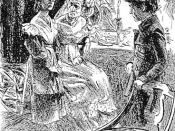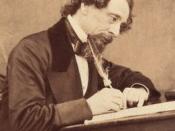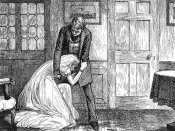Great Expectations
The theme of isolation is directly reflected in the time it was written, the Victorian era. Women during this period were dependent on men, unless they were rich. Miss Havisham, who is rich and who is not dependent on a man, is isolated in her own, home which is decayed and diseased. Charles Dickens uses Miss Havisham to show Isolation in the novel.
Charles Dickens believed that the division between the rich and the poor had produced a diseased and unhealthy society. Dickens uses Miss Havisham to show this. The British Government severely suppressed and prevented those without money from bettering themselves; this made the gap between the rich and the poor even wider. Women during this period suffered many disadvantages. They were excluded from the professions and public life. Women were also expected to "serve" and obey their husbands.
Miss Havisham a woman of the Victorian era is isolated, and this is firstly shown by the state of her house, and her appearance.
When Pip enters the grounds of Satis House, we see that the house is decayed as if time has stopped for Satis House: "....was of old bricks, dismal and had a great many iron bars on it." Pip, whilst waiting for someone to open the gate, saw that there was a large brewery, which looked like it had not been used in a very long time: "No brewing was going on in it, and none seemed to have gone on for a long time." As Pip and Estella entered the house, Pip notices some very peculiar things: "We went into the house by a side door - the great front entrance had two chains across it outside - and the first thing he noticed was, that the passages were all dark,


